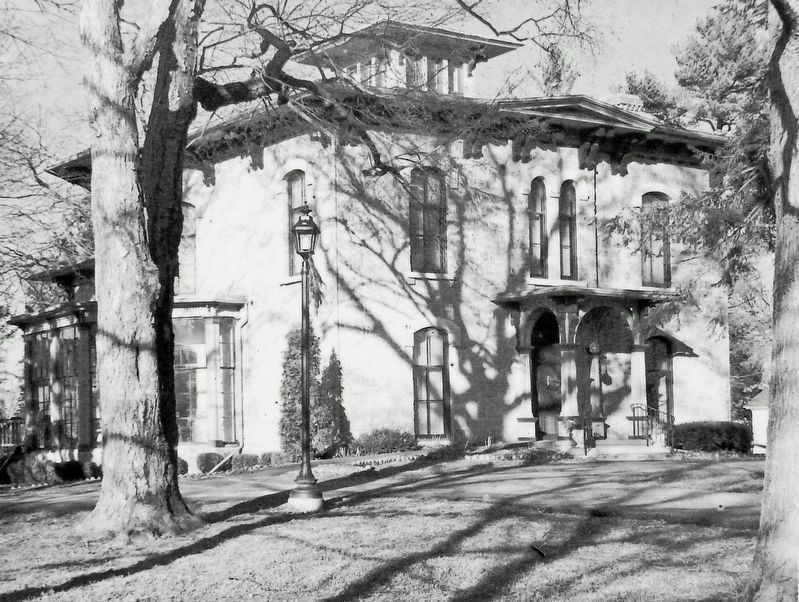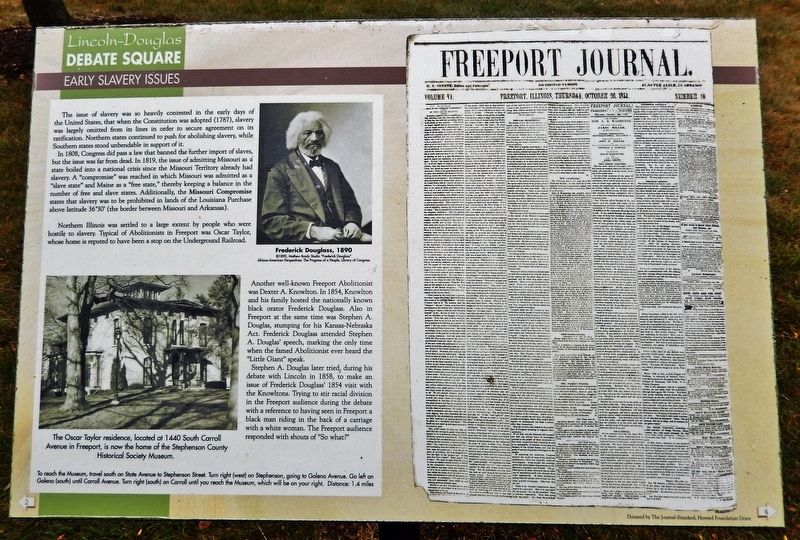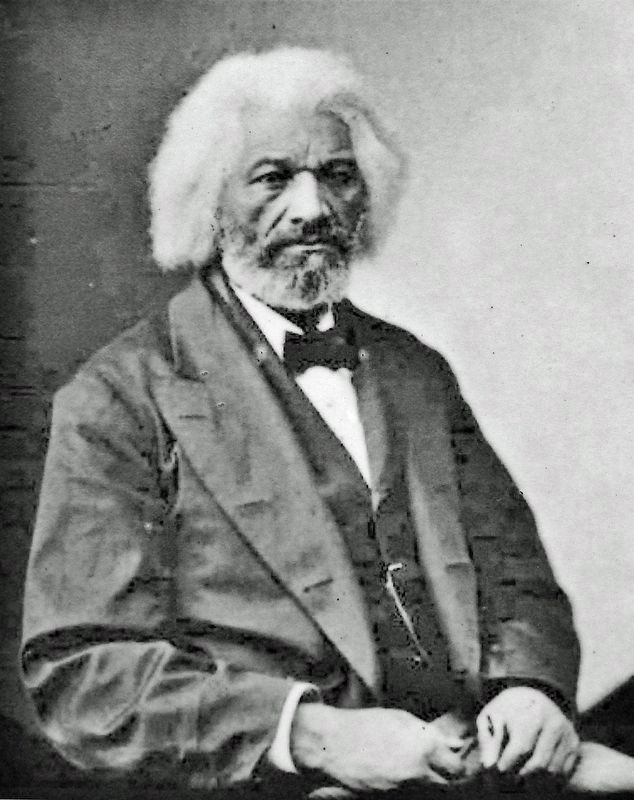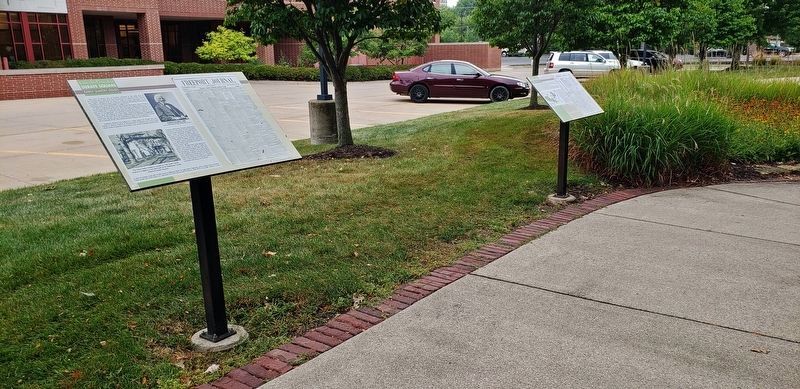Freeport Township in Stephenson County, Illinois — The American Midwest (Great Lakes)
Early Slavery Issues
Lincoln-Douglas Debate Square
The issue of slavery was so heavily contested in the early days of the United States, that when the Constitution was adopted (1787), slavery was largely omitted from its lines in order to secure agreement on its ratification. Northern states continued to push for abolishing slavery, while Southern states stood unbendable in support of it.
In 1808, Congress did pass a law that banned the further import of slaves, but the issue was far from dead. In 1819, the issue of admitting Missouri as a state boiled into a national crisis since the Missouri Territory already had slavery. A "compromise" was reached in which Missouri was admitted as a "slave state" and Maine as a "free state," thereby keeping a balance in the number of free and slave states. Additionally, the Missouri Compromise states that slavery was to be prohibited in lands of the Louisiana Purchase above latitude 36°30' (the border between Missouri and Arkansas).
Northern Illinois was settled to a large extent by people who were hostile to slavery. Typical of Abolitionists in Freeport was Oscar Taylor, whose home is reputed to have been a stop on the Underground Railroad.
Another well-known Freeport Abolitionist was Dexter A. Knowlton. In 1854, Knowlton and his family hosted the nationally known black orator Frederick Douglass. Also in Freeport at the same time was Stephen A. Douglas, stumping for his Kansas-Nebraska Act. Frederick Douglass attended Stephen A. Douglas' speech, marking the only time when the famed Abolitionist ever heard the "Little Giant" speak.
Stephen A. Douglas later tried, during his debate with Lincoln in 1858, to make an issue of Frederick Douglass' 1854 visit with the Knowltons. Trying to stir racial division in the Freeport audience during the debate with a reference to having seen in Freeport a black man riding in the back of a carriage with a white woman. The Freeport audience responded with shouts of "So what?"
Erected by The Journal-Standard, Howard Education Grant.
Topics and series. This historical marker is listed in these topic lists: Abolition & Underground RR • African Americans • Civil Rights • Government & Politics. In addition, it is included in the Former U.S. Presidents: #16 Abraham Lincoln series list.
Location. 42° 18.032′ N, 89° 37.204′ W. Marker is in Freeport, Illinois, in Stephenson County. It is in Freeport Township. Marker can be reached from the intersection of East Douglas Street (Illinois Route 75) and North State Avenue, on the left when traveling east. The marker is located along the walkway in
Lincoln-Douglas Debate Square. Touch for map. Marker is at or near this postal address: 114 East Douglas Street, Freeport IL 61032, United States of America. Touch for directions.
Other nearby markers. At least 8 other markers are within walking distance of this marker. Kansas-Nebraska Act (here, next to this marker); Second Lincoln-Douglas Debate Monument (here, next to this marker); Boulder Dedication (a few steps from this marker); Stephen A. Douglas (a few steps from this marker); Abraham Lincoln (a few steps from this marker); Welcome to Debate Square (a few steps from this marker); Debates' Structure (within shouting distance of this marker); The Freeport Lincoln-Douglas Debate (within shouting distance of this marker). Touch for a list and map of all markers in Freeport.
Related markers. Click here for a list of markers that are related to this marker. 2nd Lincoln-Douglas Debate • Freeport, Illinois
Also see . . .
1. Frederick Douglass (Wikipedia). Excerpt:
American social reformer, abolitionist, orator, writer, and statesman. After escaping from slavery in Maryland, he became a national leader of the abolitionist movement in Massachusetts and New York, during which he gained fame for his oratory and incisive antislavery writings. Accordingly, he was described by abolitionists in his time as a living counterexample(Submitted on September 23, 2023, by Cosmos Mariner of Cape Canaveral, Florida.)to enslavers' arguments that enslaved people lacked the intellectual capacity to function as independent American citizens. 3. Marker detail: The Oscar Taylor ResidenceLocated at 1440 South Carroll Avenue in Freeport, is now the home of the Stephenson County Historical Society Museum.
3. Marker detail: The Oscar Taylor ResidenceLocated at 1440 South Carroll Avenue in Freeport, is now the home of the Stephenson County Historical Society Museum.To reach the Museum, travel south on State Avenue to Stephenson Street. Turn right (west) on Stephenson, going to Galena Avenue. Go left on Galena (south) until Carroll Avenue. Turn right (south) on Carroll until you reach the Museum, which will be on your right. Distance: 1.4 miles
2. Missouri Compromise (Wikipedia). Excerpt:
The Missouri Compromise was a federal legislation of the United States that balanced desires of northern states to prevent expansion of slavery in the country with those of southern states to expand it. It admitted Missouri as a slave state and Maine as a free state and declared a policy of prohibiting slavery in the remaining Louisiana Purchase lands north of the 36°30′ parallel. The 16th United States Congress passed the legislation on March 3, 1820. The compromise both delayed the Civil War and sowed its seeds; Thomas Jefferson writing contemporaneously predicted the line it had drawn would someday tear the Union apart. 40 years later, the North and South would split closely along the 36°30′ parallel and fight for four bloody years.(Submitted on September 23, 2023, by Cosmos Mariner of Cape Canaveral, Florida.)
3. Missouri Compromise (History.com).
The Missouri Compromise would remain in force for just over 30 years before it was repealed by the Kansas-Nebraska Act of 1854. In 1857, the Supreme Court ruled in the Dred Scott decision that the compromise was unconstitutional, setting the stage for the Civil War.(Submitted on September 24, 2023, by Cosmos Mariner of Cape Canaveral, Florida.)
4. Taylor House. Excerpt:
Oscar Taylor was admitted to the bar in 1850 and opened a bank in 1851. In 1857, he hired the Chicago architectural firm of Boyington and Wheelock to design a home for his growing family. Wheelock also designed Freeport's Brewster House Hotel where Abraham Lincoln stayed when in town for the Lincoln Douglas debate. The Taylor house was opened as a museum in 1944.(Submitted on September 23, 2023, by Cosmos Mariner of Cape Canaveral, Florida.)
Credits. This page was last revised on September 27, 2023. It was originally submitted on September 23, 2023, by Cosmos Mariner of Cape Canaveral, Florida. This page has been viewed 73 times since then and 11 times this year. Photos: 1, 2, 3, 4. submitted on September 23, 2023, by Cosmos Mariner of Cape Canaveral, Florida.


